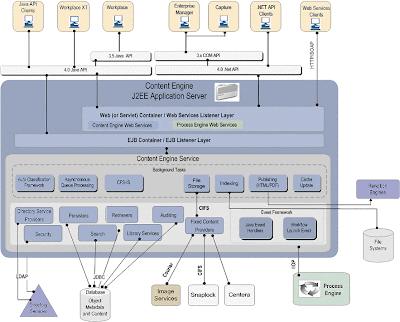Process Service is core of the business process management system. It provides workflow services on behalf of the Process Engine.
Process Task Manager is an admin tool to configure and manage process-related services on the Process Engine server.
Email Notification Enables automatic transmission of e-mail to users when specified process-related events occur. E-mail notification can also be used to track workflows.
There are three different APIs are available to develop the process engine applications.
1. Java API
2. PEWS (Process Engine Web Services)
3. Process Engine REST Services API
Process Engine Java API: IBM FileNet Business Process Manager contains a full featured Java API set that allows for various interactions with the PE server. This API set may be familiar to a lot of IBM FileNet experienced programmers from the eProcess versions through IBM FileNet P8 4.x. This API set provides access to define, administer, and control runtime workflow processing. It can also be used to build custom Step Processors and Work Performers.The PE Java API uses the CE Java API for authentication. Authentication-related calls can be done with EJB or WSI transports, though the use of the Web services transport is the normal configuration.
Process Engine Web Services: Process Engine Web Services (PEWS) provides a WSDL-based interface to communicate with PE. PEWS is a functional subset of the PE Java API. Because there is no native PE .NET API, PEWS is ideal for development with .NET. Similar to the CEWS, PEWS is also compliant with Web Services Interoperability Organization (WS-I) Basic Profile 1.0 and WS-Security.
Process Engine REST services:
A new feature introduced in IBM FileNet P8 4.5 is the PE REST Service. The PE REST Service provides access to the PE by following the Representational State Transfer (REST) architecture style. PE objects are exposed as REST resources which are accessible by standard HTTP methods. This API is ideal for Ajax-based Web applications that need to talk to PE.


